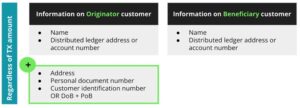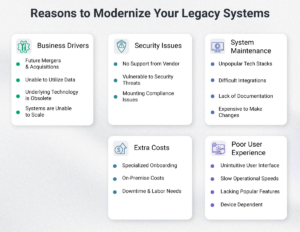You must have heard of expense-tracking apps already. They bring the latest trend of managing personal finances through mobile apps. It is increasingly getting popular as an app category now. So, ready to jump into the bandwagon of expense-tracking apps?
Are you concerned about the development cost of such apps? Well, expense-tracking apps, in terms of features and capabilities, have evolved a lot. Hence, while budgeting, you must remember that balancing basic and advanced expense tracking app features is an obvious consideration. So, don’t expect to be too parsimonious for the development expenses of the expense-tracking app.
Hold your breath, and we will explain the key cost factors for expense-tracking apps.
App UI/UX
The app UI/UX, irrespective of the app category, will always be at the thick of the success factors; hence, you should not put it aside as a regular task. Since competition among personal finance apps is too heavy, mobile expense tracker apps should have a visually engaging interface with a no-nonsense focus on usability and quick results.
Keep the tracker app like a simple, effective tool with a straightforward design that allows people to quickly check on their expenses, get precise figures, make some expense planning based on intuitive suggestions, and stay informed all the time. Make sure to design attributes manageable for the users.
Consider Cross-Platform Development
Do you want to target a wider audience with your expense-tracking app? Well, you can only do it by having a cross-platform development approach. Why build separate native apps for iOS and Android platforms when you can create one app for both without sacrificing the native performance and user experience? Yes, that’s precisely what the cross-platform development approach suggests.
Why not reduce your cost by using a framework that takes care of the web and desktop platforms? Yes, you can now build a native-looking app with a native performance by reusing up to 80% of the core codebase across iOS, Android, web, and desktop platforms. Yes, you probably guessed it already. It is the Flutter framework that does it with perfect flair. Moreover, Flutter brings down front end app development costs and Google Firebase takes care of backend development as well.
Don’t Mess Around with Must-have Features
Let’s not try to shy away from something obvious. Yes, building app features takes the most of an app budget, and you cannot do anything about it, particularly regarding must-have ones. Let’s provide here a brief list of must-have features of expense-tracking apps.
- Receipt Management
Keeping track of bills and transactions is a basic requirement for any expense tracker. The app should allow people to scan the bills and receipts through their phone camera and put them in their respective categories. The same feature can also have cloud support to keep the data in the cloud for anywhere-anytime access.
- Fast Invoice Processing
Expense tracker apps also give nods to under-process invoices and payments. They should have transaction features and payment gateways to ensure faster transactions and invoice processing.
- Robust Data Security
Just because expense tracker apps need to handle and store sensitive and vulnerable financial information, maintaining robust data security is a major concern for such apps. Apart from the state-of-the-art multi-factor authentication measures using advanced encryption is also extremely important.
- Expense Reports
The expense tracking app should also offer exhaustive and tailored-to-need reports of financial expenses and costs.
- Tax Management
Most expense tracker apps also offer tax calculation features and give precise estimates on tax deductions.
- Recurring Bills
This is a valuable feature for any expense tracker app. It allows you to pay repetitive bills through the same app and make a separate category for recurring transactions so that the rest of the expenses can focus on identifying cross-curbing opportunities.
- Expense Analysis
Finally, any expense tracker app should offer you in-depth analytical reports of the cost components and expenses and help you compare budget versus expenses for different categories.
Choose Advanced Features as Per your Budget
Now, for advanced features, you can have an incremental approach. Since you need to plan a release within a tight budget, choose one or two advanced features and keep others for future updates.
- AI-based Digital Advisor: By using artificial intelligence, you can build an intelligent advisor bot to help users track and curb expenses with timely suggestions and advice.
- Support Chatbot: The expense tracker app can also be enhanced in terms of user experience by using Chatbot support that can answer quick questions on expenses and personal finances.
- Predictive Intelligence: The app can also offer predictive insights on all expenses and cost measures and send alerts accordingly.
- Real-time Market Updates: Expense tracker apps offer real-time stock market updates to help users decide on their investment and trading portfolio.
Post-development Support and Updates
Since the app development cost factors, we just mentioned only cover the initial design, development, testing, and deployment costs, you also need to set some funds aside for post-development support and near-future updates.
To curb the initial development cost, you can always opt for incremental development and rely more on subsequent updates for adding new features and user experience attributes. But this also requires some budget adjustment for the subsequent updates.
Developer Experience and Location
The expense-tracking app development cost ultimately depends on the hourly rates charged by the app developers. The actual cost also depends upon the hiring and engagement model. Here you need to remember that the seniority and experience of the developers always incur higher prices, but in the long run, this pays off in a better way.
The location of the app developers, in the case of remote app projects, also impacts the overall budget and cost of development. North America and Europe stay at the top regarding higher rates of remote developers, and hire remote software developers from East Europe and Asian countries relatively offers the most competitive rates.
Wrapping Up
So, we couldn’t sum it up by giving real-world monetary estimates just because variable factors and choice of features and engagement models do not allow us to put forward something very specific. But with these variable factors laid bare, you can get some good budget planning help here.
- ant financial
- blockchain
- blockchain conference fintech
- chime fintech
- coinbase
- coingenius
- crypto conference fintech
- fintech
- fintech app
- fintech innovation
- Fintextra
- OpenSea
- PayPal
- paytech
- payway
- plato
- plato ai
- Plato Data Intelligence
- PlatoData
- platogaming
- razorpay
- Revolut
- Ripple
- square fintech
- stripe
- tencent fintech
- xero
- zephyrnet













